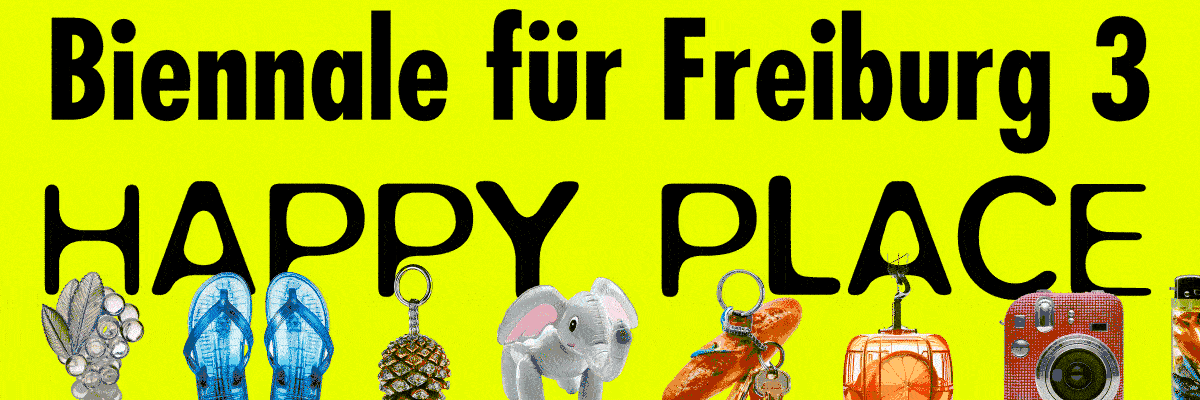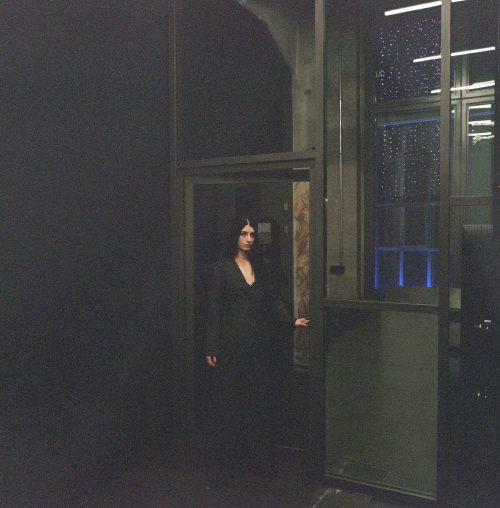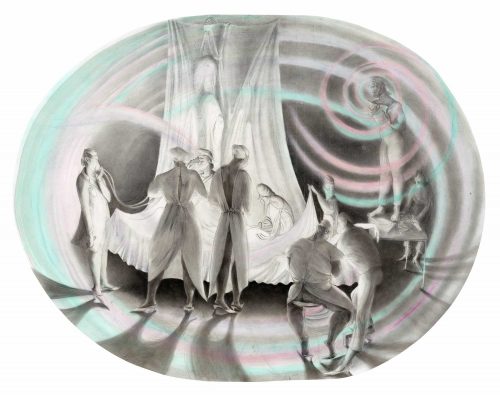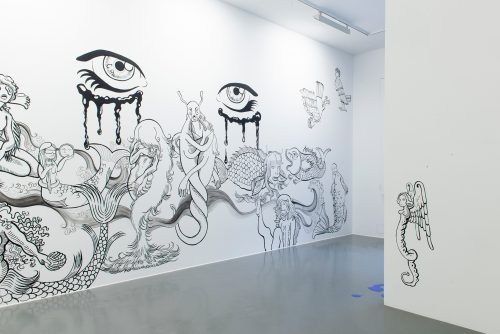
Chantal Kaufmann
omw! (On my Way!)

Exhibition View, Chantal Kaufmann "omw! (On My Way!)"
Advertisement

Exhibition View, Chantal Kaufmann "omw! (On My Way!)"

Front: “A L S O” (A), 2025 / Back: “o.T.” (Fotoserie), 2025

Front: “A L S O” (S), 2025 / Back: "Instagram am Morgen", "Fountain of Youth", 2025 "Rockers vs. DJ’s", 2024 "Head over Heels / Hals über Kopf", "Domizil", "Shiatsu", "Anma", "Schloss" (all 2025)

Exhibition View, Chantal Kaufmann "omw! (On My Way!)"

Exhibition View, Chantal Kaufmann "omw! (On My Way!)"

"Instagram am Morgen", "Fountain of Youth", 2025 "Rockers vs. DJ’s", 2024 "Head over Heels / Hals über Kopf", "Domizil", "Shiatsu", "Anma", "Schloss" (all 2025)“

Exhibition View, Chantal Kaufmann "omw! (On My Way!)"

"Imagine Language (Day_02)", 2022 (Video)

"Imagine Language (Day_02)", 2022 (Video)

Exhibition View, Chantal Kaufmann "omw! (On My Way!)"
Light traces sweep across Chantal Kaufmann’s new works and the metal sculptures from her 2025 series A L S O, guiding visitors through the exhibition omw! (On my Way!).
Reflections of the projected videos Imagine Language (Day_00, Day_03, Day_01) (2022) appear like visual twins, plunging into the floor’s glossy surface as if into a void. Artworks mirror themselves in the polished gallery floors, throwing the viewer’s gaze right back at them.
To encounter oneself in the exhibition is to reckon with one’s place within it. Each of Kaufmann’s works—she is based in Vienna—speaks to this necessity. Recognizing the self in a mirrored image carries with it both the pressure and the possibility to exist as an autonomous subject. This tension is reflected in language itself. Speaking “correctly” is a socially conditioned requirement for a child to be recognized as a person. Language, as a rigid system of order, allows us to communicate with the world—but only by using established, canonized signs: words.
In the 1970s, French psychoanalyst and theorist Julia Kristeva drew a distinction between the symbolic and the semiotic. She described the moment a child learns to speak as an “entry into the symbolic.” Building on Kristeva’s theory, Chantal Kaufmann extends these ideas into the visual realm. According to Kristeva, syntax and grammar represent the symbolic—they are rigid, stable structures. In Kaufmann’s work, the grid functions as a visual counterpart to this symbolic order. With its strict orthogonality and repetition, the grid has long been seen in art history as a signifier of objectivity, neutrality, and control. Art historian Rosalind Krauss famously described it in her essay Grids as the defining structure of modernism—while also reminding us that the grid itself is only a representation of an idea of order.
Kaufmann, drawing on an expanded notion of language informed by intertextuality, views visual grids—including those in social media—as part of a language whose rules can be bent, broken, or reimagined.
In contrast, Kristeva’s semiotic—the “unarticulated”—refers to the rhythm, tone, and cadence of speech. It is tied to physical drives, energies, gestures, and movements. Through the musicality inherent in language, unconscious and pre-verbal desires find expression. The pleasure of shaping sound with tongue and lips can result in joyful, rebellious rule-breaking. Kaufmann carries this possibility into the visual. In works such as Instagram am Morgen, Fountain of Youth, Shiatsu, Anma, Domizil, Schloss, Head over Heels / Hals über Kopf, Pair of Jeans, Im Wirthaus, Vorglühen, and Gossip (all 2025), grids lose their rigidity. Overprinted, painted over, and disrupted with gestural marks and vibrant colors, these structures become unstable, revealing how much the how shapes the what. Set against the printed regularity of the grid, Kaufmann’s painterly gestures assert a unique, unrepeatable visual language—open to personal associations and interpretations.
On the opposite wall, visitors witness a moment of visual call and response across the gallery: a group of children peers out through small rectangular photo windows in the 2025 series Untitled. Inspired by a childhood memory of an American boy band, Kaufmann reproduces media aesthetics where repetition and seriality imprint patterns of perception. The children, still hovering at the edge of childhood, laugh into the camera. Playful and silly, the metal sculptures around them seem to mimic their moods—as if the forms had tumbled straight from their mouths. Tension straps add a sense of anticipation, as though the sculptures might snap out of their mounts at any moment. Here, signs take on weight and duration. Intuitively, mouths begin to echo imagined sounds. Oversized vowels threaten to burst across the space—gleeful, unruly, and loud. Please.
Bio:
Chantal Kaufmann (*1984, Lucerne, Switzerland) lives and works in Zurich and Vienna. She studied Fine Arts at the Zurich University of the Arts (2012–2015) and Critical Studies at the Academy of Fine Arts Vienna (2017–2022). Her recent solo exhibitions include Kunstraum Memphis, Linz (2024); Kunstverein Gartenhaus, Vienna (2024); Milieu, Bern (2023); Galerie Kirchgasse, Steckborn (2023); and Oxford, Berlin (2022).
She has participated in group exhibitions at Museum im Bellpark, Kriens (2019) and Kunsthalle Zurich (2016). Her video works have been shown at DOCK 20, Lustenau (2023); the Viennale – Vienna International Film Festival (2022); mumok kino, Vienna (2018); and in group exhibitions at Kunsthalle Bern (2022) and Weiss Falk, Basel (2020).
Kaufmann co-directed the independent art spaces UP STATE, Zurich (2014–2018) and Shoefrog, Vienna (2019–2020). She currently works as a Senior Artist at the University of Applied Arts Vienna, where she teaches in the Department of Painting.
Anne Zühlke




